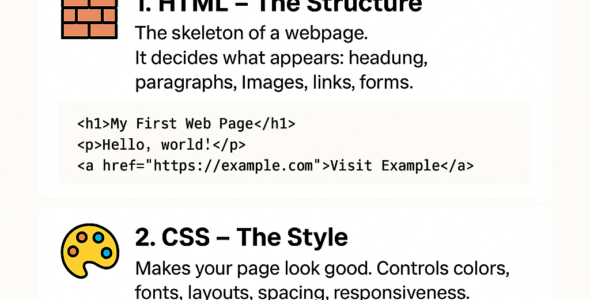Advanced Web Security with syntax and examples
Advanced web security involves protecting web applications from sophisticated attacks and vulnerabilities. It requires a deep understanding of web application architecture, network protocols, and cryptography.
Web Application Security Risks
- Injection attacks (SQL, NoSQL, Command)
- Cross-site scripting (XSS)
- Cross-site request forgery (CSRF)
- Authentication and authorization vulnerabilities
- Sensitive data exposure
Advanced Web Security Topics
- Web Application Firewalls (WAFs)
- Content Security Policy (CSP)
- Web Cryptography API
- Secure Protocols (HTTPS, TLS)
- Secure Coding Practices (input validation, output encoding)
Web Application Firewalls (WAFs)
- Protect web applications from common attacks
- Use WAFs like OWASP ModSecurity and AWS WAF
Content Security Policy (CSP)
- Define allowed sources of content for web pages
- Prevent XSS attacks by restricting executable content
Web Cryptography API
- Use cryptographic primitives like encryption and digital signatures
- Implement secure data storage and transmission
Secure Protocols
- Use HTTPS (TLS) for secure communication
- Implement secure protocol negotiation and key exchange
Secure Coding Practices
- Validate user input and encode output
- Use secure coding guidelines like OWASP
By mastering advanced web security topics, developers can protect their web applications from sophisticated attacks and vulnerabilities, ensuring the security and privacy of their users' data.
Best Practices:
- Use a WAF to protect against common attacks
- Implement CSP to prevent XSS attacks
- Use Web Cryptography API for secure data storage and transmission
- Use secure protocols like HTTPS and TLS
- Follow secure coding practices like input validation and output encoding
Tools and Technologies:
- OWASP ModSecurity
- AWS WAF
- Web Cryptography API
- HTTPS and TLS
- OWASP Secure Coding Practices
Advanced Web Security Topics
- Web Application Firewalls (WAFs):
- Protect web applications from common attacks like SQL injection and cross-site scripting (XSS)
- Use WAFs like OWASP ModSecurity and AWS WAF
Syntax:
# ModSecurity example
SecRule REQUEST_METHOD "POST" \
"phase:2, \
t:none, \
block, \
id:1, \
msg:'SQL Injection Attack'"
- Content Security Policy (CSP):
- Define allowed sources of content for web pages
- Prevent XSS attacks by restricting executable content
Syntax:
# CSP example
Content-Security-Policy:
default-src 'self';
script-src 'self' (link unavailable);
object-src 'none';
- Web Cryptography API:
- Use cryptographic primitives like encryption and digital signatures
- Implement secure data storage and transmission
Syntax:
// Web Cryptography API example
const crypto = window.crypto || window.msCrypto;
const key = await crypto.subtle.generateKey(
{ name: 'AES-GCM', length: 256 },
true,
['encrypt', 'decrypt']
);
- Secure Protocols:
- Use HTTPS (TLS) for secure communication
- Implement secure protocol negotiation and key exchange
Syntax:
# TLS example
const tls = require('tls');
const socket = tls.connect(
443,
'(link unavailable)',
() => {
console.log('Connected');
}
);
- Secure Coding Practices:
- Validate user input and encode output
- Use secure coding guidelines like OWASP
Syntax:
// Secure coding example
const express = require('express');
const app = express();
app.get('/user/:id', (req, res) => {
const id = (link unavailable);
// Validate user input
if (!/^\d+$/.test(id)) {
res.status(400).send('Invalid user ID');
return;
}
// Encode output
res.send(`User ID: ${id}`);
});
By mastering advanced web security topics, developers can protect their web applications from sophisticated attacks and vulnerabilities, ensuring the security and privacy of their users' data.
